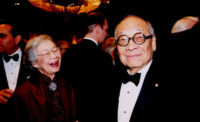Interview with Eva Franch i Gilabert
RECORD speaks with the director-elect of the Architectural Association School of Architecture in London.

Photo courtesy Eva Franch i Gilabert
Eva Franch i Gilabert, the executive director and chief curator of New York’s Storefront for Art and Architecture since 2010, has been elected director of London’s Architectural Association School (AA). The AA, whose alumni include Rem Koolhaas, Richard Rogers, and Zaha Hadid, and which calls itself a “participatory democracy,” put the choice of director up to a vote of more than 1,000 students and employees. Franch received 67 percent of the votes cast, far more than the other finalists, Pippo Ciorra, senior curator of MAXXI Architettura in Rome, and Robert Mull, head of architecture and design at the University of Brighton. Franch, who is still negotiating the terms of her employment contract, will replace Samantha Hardingham, who has served as interim director since Brett Steele, a Texan, left last year to become a dean at UCLA. She is the first woman to be elected director of the AA.
In a presentation prior to the vote, Franch said, “The AA possesses an unparalleled combination of rigor and madness, one that should be nourished and cultivated.” She later told RECORD that she felt obligated to more than just the AA’s 750 students: “We are going to be doing great things, and I want to make sure we share them with the global community.”
First she will have to manage the AA’s budget shortfalls. Last year, the organization announced that it might cut costs by shuttering its publications and exhibitions units, prompting expressions of concern from curators and educators. Nader Tehrani, dean of the architecture school at Cooper Union (where Franch is a professor) described her as “maybe the only person I can think of who can address the realities of the Architectural Association’s financial challenges with a bold and frontal stance, using it as an opportunity for the setting of new pedagogical and intellectual priorities.”
At Storefront, Franch mounted a dizzying array of exhibitions and symposia, as well as events that resisted categorization. Other institutions run architecture competitions; Franch created the “Competition of Competitions.” For the gallery’s 30th anniversary, Franch installed a circular waterbed where, she said, “visitors were invited to dream surrounded by all the failed applications, rejection letters, and other unfulfilled institutional” ambitions. A native of Catalonia, she often cooked paella for Storefront gatherings. “We had some really good parties, and that’s important in bringing the community together,” Franch told RECORD. She added that each of the parties she threw made a serious point and that she will continue, at the AA, to use “the fundraiser as a space for critical thought.”
As cocurator of the U.S. Pavilion at the 2014 Venice Architecture Biennale, Franch helped document the work done overseas by American architecture firms during the last 100 years. The pavilion portrayed architecture as one of 20th-century America’s main exports, and not an entirely benign one.
Franch grew up on a dirt road in Deltebre, a city 100 miles southwest of Barcelona, surrounded by rice fields, and spent much of her time in her mother’s hair salon. She left to study architecture in Barcelona and Delft, practiced briefly, and then moved to the U.S., with stops at Princeton, the State University of New York at Buffalo, and Rice University. Charles Renfro, the Manhattan architect, told RECORD he began noticing her at architecture school critiques, where he pegged her as “someone we would all be listening to in the future.” Later, as president of Storefront’s board of directors, Renfro traveled extensively with Franch and discovered her to be “a force of nature. I have no image of her sleeping.”
In a “vision statement” presented to the AA, Franch listed reasons to believe that architecture is in crisis: “That we are the last ones at the decision-making tables. That we are the last ones to inspire and to move people. That we are the last ones to engage with the most pressing issues affecting the planet today.” She concluded: “Yet it is in moments of crisis that opportunities for redefinition emerge.”


